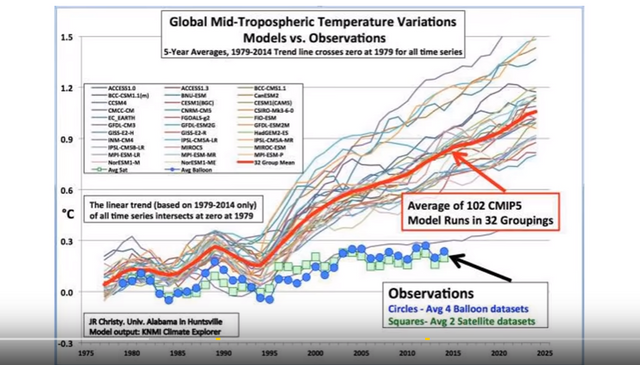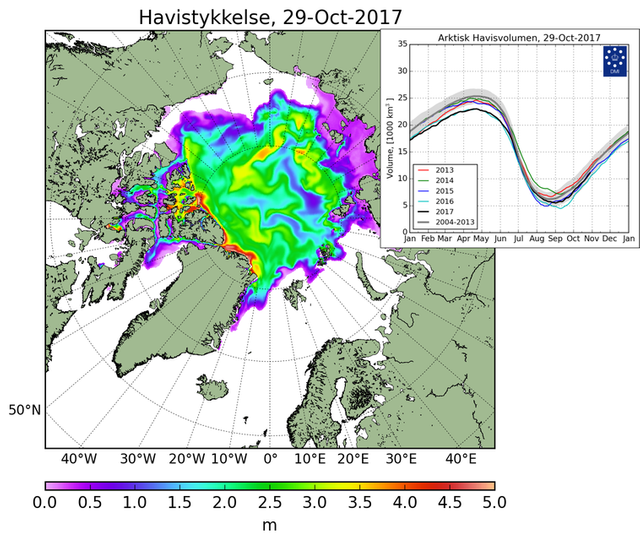GLOBAL WARMING; THE BIG PICTURE
So, I am sure by now you have been exposed to numerous reports on mainstream media propagating the warning from the IPCC about how we have only twelve years, left such as this one from the Guardian; "We have 12 years to limit climate change catastrophe, warns UN"
"The world’s leading climate scientists have warned there is only a dozen years for global warming to be kept to a maximum of 1.5C, beyond which even half a degree will significantly worsen the risks of drought, floods, extreme heat and poverty for hundreds of millions of people."
Scary stuff, right? Be afraid, be very very afraid. And in case the lead paragraph doesn't send shivers up and down your spine, they give this image of a firefighter battling a forest fire.

Of course, they have to trot out the scientific authority for you to accept without question. "It’s a line in the sand and what it says to our species is that this is the moment and we must act now,” said Debra Roberts, a co-chair of the working group on impacts. “This is the largest clarion bell from the science community and I hope it mobilises people and dents the mood of complacency."

When I see youths who are up in arms over this so-called "clarion bell" I wonder what is it they know for history and if they have ever heard the story of 'The Boy Who Cried Wolf"? This is not the first time mainstream media picks up on the story of the scientific community ringing the "clarion bell" regarding a climatic catastrophe. And generally, what every one of those so-called "clarion bells" were based on was a trend over a short time frame of a few decades, and as such, will give a false impression if the trend is accepted as being linear, for, it is well known throughout thousands of years of high definition climate history data that climate is cyclical. And who exactly is a denier? Is it those who are true to science and maintain a healthy scepticism regarding these claims based on 'trends with short time frames' or is it those who are pushing an ideological belief regarding climate who ignore the big picture? Yes, anthropogenic global warming is an ideology that you have been bullied and peer pressured into believing by the media.
Tony Heller reporting on the repeated warnings of the scientists
Tony Heller on Thirty Years of Failed Climate Predictions
Let's get back to the article in the Guardian and see what is being claimed. "Policymakers commissioned the report at the Paris climate talks in 2016, but since then the gap between science and politics has widened." ~
This is an interesting admission as it reveals that policy predates the science. Whenever it comes to a commission of enquiry, one always has to check the terms of reference for these terms will define what the report can and cannot say. Often these terms can be very limiting and who exactly are these "policymakers"? In the case of the IPCC, it has shut itself off to all science that does not support the belief of man-made climate change and as such is a political limitation that will taint the science by limiting its scope of the investigation.
Paleoclimatologist, Dr Tim Ball on the deliberate corruption of climate science
They then go on in the article and claim. "The world is currently 1C warmer than pre-industrial levels." ~ Is it? Is this claim based on the most commonly used dataset by climatologists that was recently audited, whereupon, it was discovered that the data had never been audited or double checked for accuracy and had temperature readings suggesting towns were literally boiling or tropical islands were frozen solid blocks of ice. DATAGATE
The strength of science is scepticism and reproducibility. How has it been that this dataset which is used extensively by the "world's leading climate scientists" can be so tainted? How can we trust any report, IPCC or not, that have used this dataset? There have been several claims before that NOAA has manipulated data. That they use models to interpret temperature data where they do not have thermometers. What this essentially does is create a self-fulfilling prophecy. By using a climate model tweaked to show warming, it will interpret the temperatures needed to show warming. And let's be clear here, modelling climate is a difficult thing to do which is why every Global Climate Model has failed in its predictions by 90-300 per cent. And such failure in science is generally considered a falsification of the model.

According to Dr Roy Spencer, formerly of NASA, his charting of UAH unadulterated satellite data shows that in 2016 we had a peak hot spot and that since then temperatures have declined to just 0.14* celsius over baseline which essentially offsets more than 90% of the alleged global warming of one-degree Celsius.

The article further states.
"At 1.5C the proportion of the global population exposed to water stress could be 50% lower than at 2C, it notes. Food scarcity would be less of a problem and hundreds of millions fewer people, particularly in poor countries, would be at risk of climate-related poverty."
Food scarcity. I do not know if you have noticed, but in the past couple of years, in particular, there has been devastating crop losses and the two main causes have been winter coming early preventing harvest or winter staying late preventing planting with either hail, floods and droughts. Of the last three, in my opinion, droughts have had the most devastating effect globally. Are these droughts "unprecedented"? No. We have records of similar patterns of weather throughout history occurring especially during Grand Solar Minimums(GSM) such as the one we are in. And during these previous GSMs, temperatures did not increase, they decreased dramatically and populations decreased by as much as 50% for Europe during the Wolf Minimum due to famine, disease and cold.
The article continues with its propaganda.
"Sea ice-free summers in the Arctic, which is warming two to three times faster than the world average, would come once every 100 years at 1.5C, but every 10 years with half a degree more of global warming."
Sea ice-free summers? This has been another threat that is made year after year and yet has not come to fruition. In the video below I took data from NOAA and animated it to show what sea-ice looks like over several decades. Arctic warming two to three times faster? Really? What part of the Arctic are they talking about?

While the Russian side of the geographic north pole was relatively ice-free this past summer, that was not the case for the Canadian side. Greenland had a cold summer and an increase in its ice sheet. See the buildup of four-meter thick ice along the north coast of Greenland. Compare it to last year at this date.

While the Russian side has less coverage than last year, we do see more ice further south on Greenland and much more ice along the northern coast of Canada. As well, overall the ice is at least a meter thicker. Also note how this year the ice has moved south to the mouth of Hudson Bay where this past July icebreakers were called in to create an ice free path for merchant ships.
"The Ebb and Flow of Arctic Ice" animated by F. Thornton
And clearly, it shows a cyclicity to its melting and freezing. But what are the levels like today compared to our past?

Image courtesy of Köseoğlu Et Al., 2018
This graph shows that Arctic Ice cover is at its highest in the last nine-thousand years.
But what about the Antarctic? Surely the ice is melting there, right?
Nope.

Comiso Et Al., 2017 * “The Antarctic Sea Ice Extent Has Been Slowly Increasing Contrary To Expected Trends Due To Global Warming And Results From Coupled Climate Models. After A Record High Extent In 2012 The Extent Was Even Higher In 2014 When The Magnitude Exceeded 20 × 106 Km2 For The First Time During The Satellite Era. … [T]He Trend In Sea Ice Cover Is Strongly Influenced By The Trend In Surface Temperature [Cooling].”*
The article continues.
Carbon pollution would have to be cut by 45% by 2030 – compared with a 20% cut under the 2C pathway – and come down to zero by 2050, compared with 2075 for 2C.
At present 97% of energy in North America is produced via carbon-based fuels. Even if temperatures were rising, which they are not, to reduce carbon emissions to zero would require all energy to be derived from renewables which are variable as they depend on the sun to shine or the wind to blow. It would mean all cars are off the road, for even electric vehicles have steel in them and to process that steel would create a carbon footprint. All homes in winter would be heated by renewably sourced electricity which can be highly unreliable during Canadian winters. It means all plastics would have to be made from food as oil-based plastic would produce a carbon footprint. And using food as a raw material for plastic at a time when famine is lurking around the corner is a recipe for epic proportions. Essentially such a reduction to zero seems to me, to require or will produce, a massive reduction in population. But they never say that do they.
Thanks to Electroverse
Thank you for reading. If you would like to see more posts like this, please feel free to follow me. Leave an interesting question or an intelligent question and I shall follow you. Let's get a conversation statrted.
Compiled and written by F. Thornton
@daemon-nice
PEACE
This post has been upvoted for free by @minibot with 5%!
Get better upvotes by bidding on me.
More profits? 100% Payout! Delegate some SteemPower to @minibot: 1 SP, 5 SP, 10 SP, custom amount
You like to bet and win 20x your bid? Have a look at @gtw and this description!